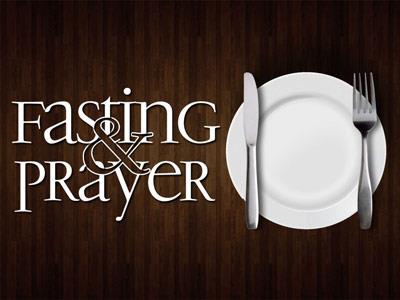-
"Praying...not Preying!" [part Three]
Contributed by Reverend Cooper Mcwhirter on Nov 28, 2017 (message contributor)
Summary: In prayer we yield our lives and circumstances to the Lord and trust Him to act in His time and in His way.”
Sermon Preached at Grace Community Church (EPC)
Sun City Grand, Surprise, AZ
Sunday, May 22, 2011
by the Reverend Cooper McWhirter
“Praying … Not Preying: The High Priestly Prayer” [Part Three]
John 17:1-5
The “Lord’s Prayer”, which we recited earlier this morning (recorded in Matthew 6:9-13 and Luke 11:2-4), is a misnomer of sorts. And I say this because these words spoken by Jesus were meant to serve as a guide or benchmark for His disciples when they prayed to their Father in heaven.
Recorded only here in the gospel of John, chapter seventeen, are the poignant words spoken by our Lord shortly before His betrayal, arrest, trials, scourging and subsequent crucifixion. In every respect this truly is what should be called “The Lord’s Prayer”, or as it is so aptly titled, “The High Priestly Prayer”.
For although Jesus prayed often to His heavenly Father, few of His prayers were ever recorded verbatim (Matthew 14:23; Luke 5:16). It is also the longest of Jesus’ prayers. So in this chapter we catch a glimpse of the intimate relationship which existed between God the Father and God the Son since before the creation of the world.
In many respects Jesus’ prayer marks a turning point with the finality of His earthly ministry and the beginning of what would become His ministry of intercession on behalf of all believers [Hebrews 7:25]. St. John Chrysostom (349-407 A.D.), the fourth century archbishop of Constantinople, who people called “Golden tongue” because of his oratorical skills, once referred to this prayer as the greatest prayer ever conceived. It’s been widely speculated that Clement of Alexandria, a fifth century church patriarch, was the one who first called this “The High Priestly Prayer”. And he did so because Jesus presents Himself as our “Great High Priest” who divinely intercedes for believers of every age; past, present and future.
According to numerous Bible scholars this prayer can best be understood by dividing it into three parts: initially Jesus prays for Himself (vss 1-5). He then turns His attention to His disciples (vss 6-19). Jesus concludes by praying on behalf of all who would place their faith in Him (vss 20-26).
So, for the next three weeks let us dissect Jesus’ priestly prayer in the hope of gaining further insight as to how we, as believers, should pray. In this first segment we discover: THE INTIMACY BETWEEN GOD THE FATHER AND GOD THE SON. Secondly, we become aware of: THE TRANSFERENCE OF DIVINE AUTHORITY FROM THE FATHER TO HIS SON. Finally, we bare witness as to: THE COMPLETION OF THE SON’S WORK HERE ON EARTH.
First, let us consider the first five verses whereby we catch a glimpse of: THE INTIMACY BETWEEN GOD THE FATHER AND GOD THE SON (repeat).
Before time began, before the creation of the world, the first words in the Book of Genesis says: “In the beginning … God …” [Genesis 1:1a]. Yet, in the works of creation God revealed Himself as three distinct Persons: God the Father, God the Son, and God the Holy Spirit; three in one.
In the first chapter in Genesis God unveils Himself as three distinct entities; all whom share equally in all of the divine attributes. Thus, the plural form of the word for God “elohim” where we read: “And God said: ‘Let us make man in our image’ ” [Genesis 1:26].
Never before, and never again, would there be a separation between the Persons of the Godhead as would occur at the time when Christ took upon Himself the sins of those He came to save. The resulting action caused God the Father to recoil in disgust at the sight of the amalgamation of our sins placed solely upon His Son and who, for a moment in time, incurred the full wrath of the Father’s fury!
Jesus, fully aware of what was about to take place, led His disciples, less the one who would betray Him, down from the Upper Room, through the streets of Jerusalem, across the Kidron Valley, and then up the sloping hills to the Mount of Olives.
It was during this trek leading down towards the Kidron Valley when Jesus began this prayer in full view of and within earshot of His eleven followers. He began by lifting up His eyes towards heaven saying: “Father, the hour has come. Glorify Your Son, that Your Son also may glorify You.”
I had always assumed that Jesus said this prayer in the Garden of Gethsemane when He went off by Himself to pray. But the first words of John chapter eighteen dispels such a notion. Jesus was intentional when He prayed aloud so that His disciples could plainly hear Him. These first words speak volumes as to the work and Person of Jesus the Christ who was so intimately acquainted with His heavenly Father that He dared call Him, “Abba!” meaning “Father.” By addressing the Father in this manner, Jesus not only indicated the utmost respect and reverence towards His Father, but He also conveyed an mistakable intimacy with the Father!

 Sermon Central
Sermon Central



